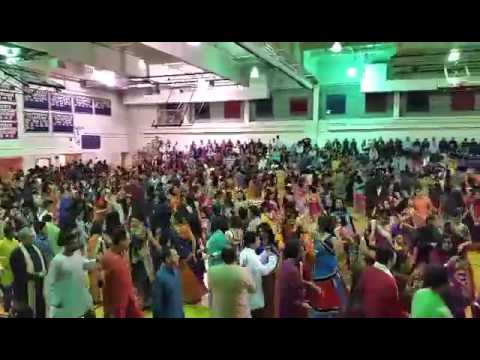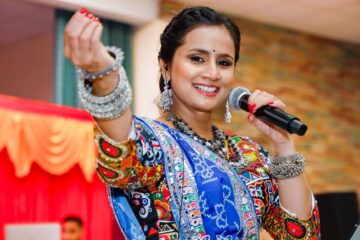Dandiya Raas

Raas or Dandiya Raas is the traditional folk dance form of Vrindavan, India, where it is performed depicting scenes of Holi, and lila ofKrishna and Radha. Along with Garba, it is the featured dance of Navratri evenings in Western India. During Navratri festival, in most of the cities of Gujarat and in Mumbai people gather and perform Garba dance.
The word “Raas” comes from the Sanskrit word “Rasa”. The origins of Raas can be traced to ancient times. Lord Krishna performed Rasa lila” (Lila means Lord Krishna’s playful dance. The word “Laika” also refers to things that God does that we fully understand).
There are several forms of Raas, but “Dandiya Raas”, performed during Navaratri in Gujarat is the most popular form. Other forms of Raas include Dang Lila from Rajasthan where only one large stick is used, and “Rasa lila” from North India. Raas Lila and Dandiya Raas are similar. Some even consider “Garba” as a form of Raas, namely “Raas Garba”.
In Dandiya Raas men and women dance in two circles, with sticks in their hands. In the old times Raas did not involve much singing, just the beat of Dhol was enough. “Dandiya” or sticks, are about 18″ long. Each dancer holds two, although some times when they are short on Dandiya they will use just one in right hand. Generally, in a four beat rhythm, opposite sides hit the sticks at the same time, creating a nice sound. One circle goes clockwise and another counter clockwise. In the west, people don’t form full circles, but instead often form rows.
Costumes and music
The women wear traditional dresses such as colorful embroidered choli, ghagra and bandhani dupattas, which is the traditional attire, dazzling with mirror work and heavy jewellery. The men wear special turbans and kedias, but can range from area to area. The dancers whirl and move their feet and arms in a choreographed manner to the tune of the music with a lot of drum beats. The dhol is used as well as complementary percussion instruments such as the dholak, tabla, et cectra. the true dance gets extremely complicated and energetic. Both of these dances are associated with the time of harvest.
Difference between Dandiya and Garba
The main difference between Garba and Raas is that Raas is played with Dandiyas (pair of colorfully decorated sticks), while Garba consists of various hand and feet movements. Most of the Dandiya steps require even number of people while in Garba there is no such requirement on number of people.
For Dandiya, sometimes instead of sticks, people also use “Swords”. The circular movements of Dandiya Raas are much more complex than that of Garba. As people play with sticks, it is important to be careful while playing Dandiya.
